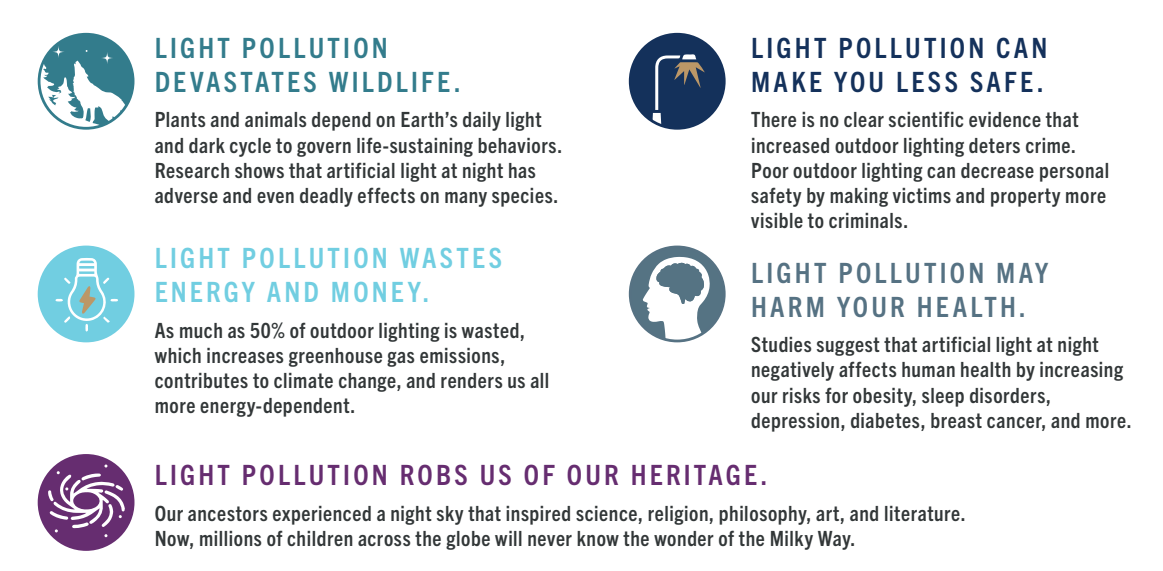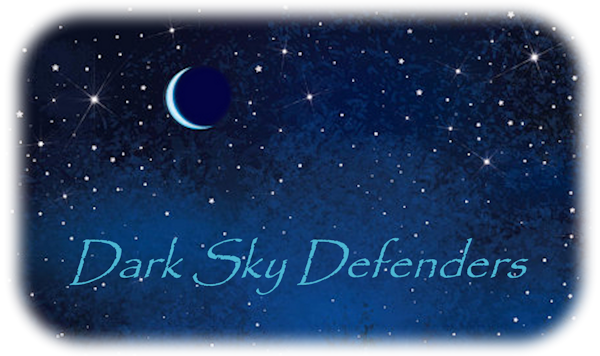|
John Barentine PhD, Dark Sky Consulting LLC, & DarkSky International
To successfully communicate with the public and decision-makers, dark-sky advocates must have access to the results of the latest research on artificial light at night (ALAN) and light pollution. These results are contained in technical publications that are often difficult for non-specialists to understand. It is particularly true of light pollution research, which borrows from many academic subjects. A newly released summary of papers published through 2022 brings advocates up to date with the latest research results. Given the distinct value in making this research more accessible, in 2022 DarkSky International published “Artificial Light At Night: State Of The Science.” The report distilled the contents of over 300 scholarly papers into a short, easy-to-read summary. It grouped results into seven broad categories: the night sky; ecological impacts; human health; public safety; energy use and climate change; light and social justice; and space light pollution. It concludes by listing several open questions that may guide research in coming years, explaining briefly the methodology by which the report was written, and providing bibliographic information for all sources of information. Overall, the report finds evidence of significant harm to the night sky and wildlife ecology from light pollution on local to global scales. There are major concerns about how ALAN diminishes traffic safety during the overnight hours. While a strong link between ALAN exposure and human health seems to be established over decades of laboratory studies, the influence of light from outdoor sources remains unclear. And to the extent that roughly 80 percent of world electricity production relies on burning fossil fuels, wasted light at night from outdoor sources remains linked to climate change – even given the ongoing adoption of highly energy-efficient solid-state lighting. We hope this will be useful to advocates and the public to help understand what research results tell us about light pollution and help others recognize the significance of the problem. We intend to provide annual updates to the report to keep up with the rapid developments in this field. SUMMARY The Night Sky Light emitted into the night sky makes it difficult to see the stars. On the ground, ALAN makes the nighttime environment brighter. Weather changes like clouds and snow on the ground can make this impact worse. New and inexpensive light sources like white light-emitting diodes (LEDs) have a growing impact on both the night sky and outdoor spaces at night. Ecological Impacts ALAN exposure impacts almost every species studied by scientists. It interferes with their biology and changes how they interact with the environment. This harms ecosystems and can make plants and animals less resilient in the face of environmental change. Human Health Scientific evidence establishes a link between ALAN exposure and adverse human health consequences. These include disruptions in chemical signaling in the body, certain kinds of changes at the genetic level, and shifts in sleep/wake cycles set by natural light sources. These effects may contribute to the incidence of certain chronic diseases in some people. These conclusions are largely drawn from controlled studies of exposures to indoor lighting, suggesting caution in interpreting the influence of outdoor lighting on health. Public Safety The belief that outdoor lighting improves traffic safety and discourages or prevents crime is common. It may explain in part the rapid growth in the use of outdoor light at night in recent years and decades. There are cases where the careful application of outdoor lighting may improve nighttime safety, but there is no general benefit supported by scientific evidence. Energy Use and Climate Change Wasted outdoor light at night is wasted energy. The world remains highly dependent on fossil fuels to generate electricity. Since light pollution represents a waste of energy, it also contributes directly to climate change. Light and Social Justice We know very little about how ALAN affects people in social contexts. Light at night may be used in ways that affect neighborhoods according to the race of the people who live in them. That may make light at night use a matter of social and environmental justice. Space Light Pollution The number of artificial satellites surrounding the Earth is increasing rapidly. Satellites reflect sunlight to the ground and change the appearance of the night sky. Because they raise night sky brightness, they are a new kind of light pollution threat. The full report can be found here. Comments are closed.
|
Archives
July 2024
|
|
Donations to Dark Sky Defenders do not go to DarkSky International. Please contribute directly to DSI for donations and memberships.
|
|


 RSS Feed
RSS Feed
